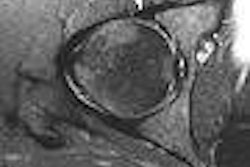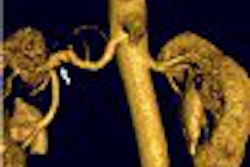The likelihood of malignancy in MRI-detected breast lesions increases with lesion size, according to a study in the American Journal of Roentgenology. As a result, the authors suggested that biopsy may not always be necessary for lesions smaller than 5 mm.
"The development of a breast MRI lexicon should improve our understanding of the (positive predictive value) of specific MRI features," wrote Dr. Laura Liberman and colleagues from the Memorial Sloan-Kettering Cancer Center in New York City. "Ideally, an algorithm could be developed that would enable prediction of the likelihood of cancer in MRI-detected lesions as a function of a variety of parameters, taking into account features of ... the lesion" (AJR Women's Imaging, February 2006, Vol. 186:2, pp. 426-429).
The group conducted a retrospective review of 666 lesions in 429 women, 42% of whom were postmenopausal. All of these MRI-detected lesions were mammographically occult. Contrast-enhanced imaging was done on a 1.5-tesla unit (Signa, GE Healthcare, Chalfont St. Giles, U.K.) using a dedicated surface breast coil. All lesions also underwent MRI-guided needle localization and surgical biopsy.
According to the results, the median size of the 666 MRI-detected lesions was 1 cm. Of these, 22% were deemed malignant and the majority was ductal carcinoma in situ (54%). The authors stated that the frequency of malignancy was significantly higher in larger lesions equal to or larger than 1 cm than in smaller ones. Also, the likelihood of malignancy increased as the lesions grew larger.
Other findings in this study included the following:
- The frequency of malignancy was higher in the ipsilateral breast.
- The frequency of malignancy was higher in larger lesions in women at high risk for breast cancer.
- The frequency of malignancy was higher in postmenopausal women for lesions less than 1 cm.
The authors concluded that biopsy may not be warranted for MRI-detected lesions less than 5 mm given the low frequency (3%) of malignancy in their series of patients. Future studies will have to involve more than one image interpreter (as was the case in this study) and should investigate whether similar results can be obtained with a higher field strength magnet.
By Shalmali Pal
AuntMinnie.com staff writer
February 8, 2006
Related Reading
MRI best for familial breast cancer detection, December 16, 2005
Breast MRS proves sensitive to all cancers but not in normal breast tissue, November 27, 2005
Breast MRI still not specific enough to obviate biopsy, December 7, 2004
Copyright © 2006 AuntMinnie.com



















